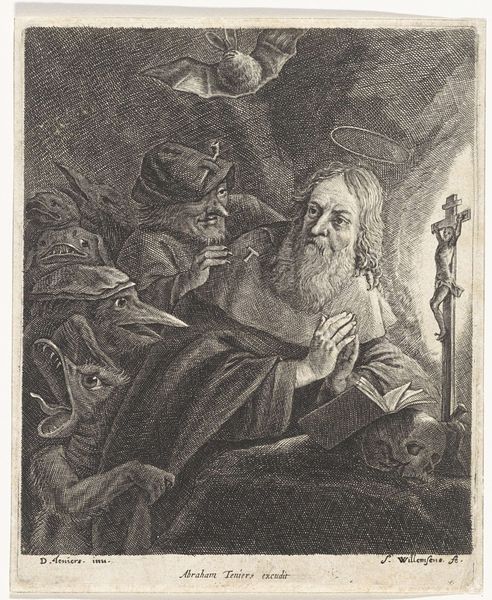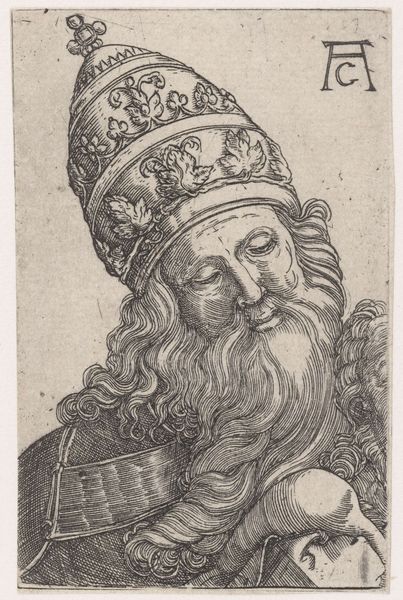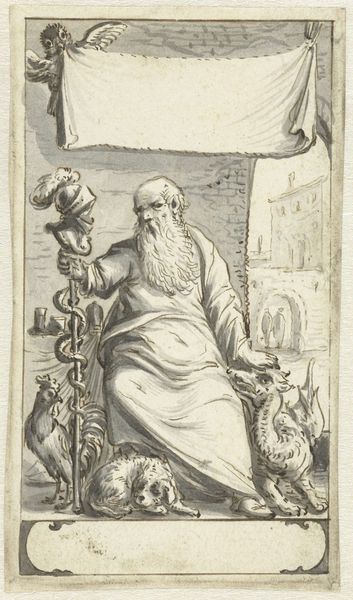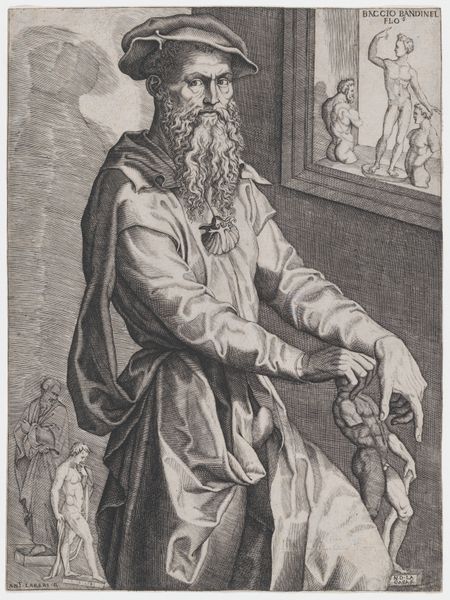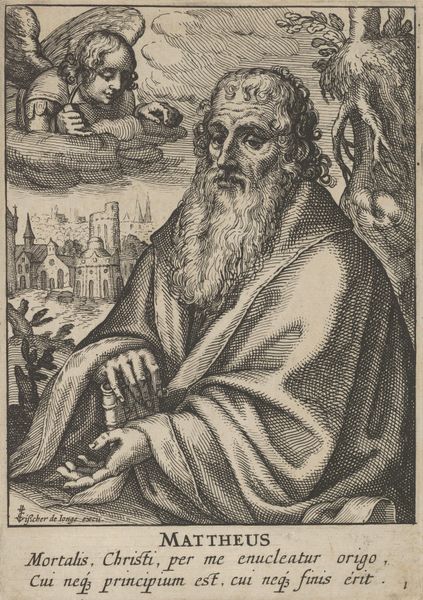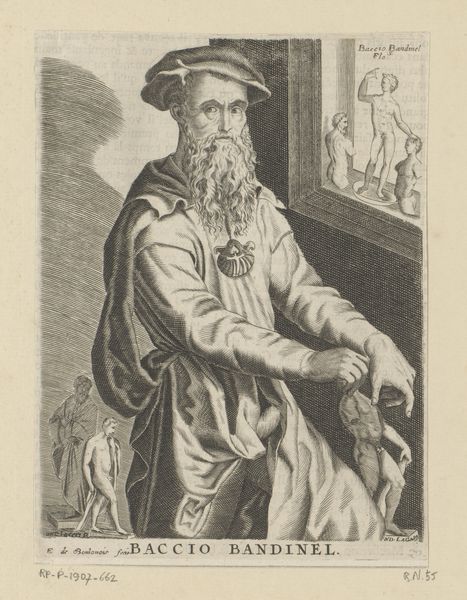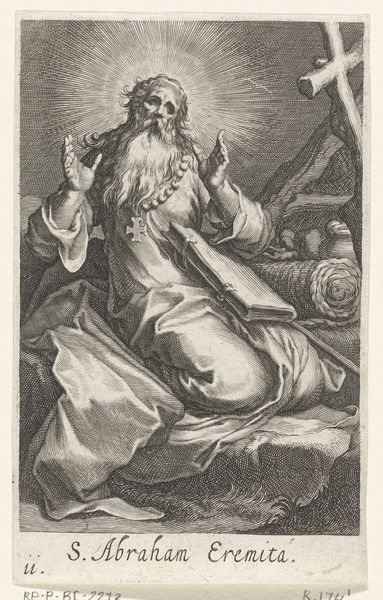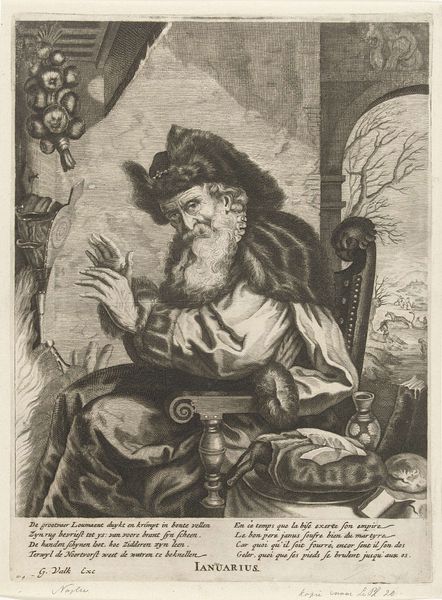
drawing, print, engraving
#
portrait
#
drawing
# print
#
figuration
#
men
#
sketchbook drawing
#
history-painting
#
italian-renaissance
#
engraving
Dimensions: Sheet: 6 1/8 × 4 1/8 in. (15.5 × 10.5 cm)
Copyright: Public Domain
This is Judah, from The Twelve Sons of Jacob, made by Jacques de Gheyn II in the late 16th or early 17th century. It's an engraving, meaning the image was incised into a metal plate, then inked and printed. Notice how the network of lines creates shading and texture, giving the figure a sculptural quality. Look closely at the details: the fur trim on Judah’s robe, the lion’s mane, even the wrinkles on his face. Each one is rendered with incredible precision. Engraving was a laborious process, demanding immense skill and patience. De Gheyn would have used specialized tools to carve the image into the metal, working in reverse to achieve the desired result. The final print is a testament to his mastery of the medium, and to the rich possibilities of reproducible images in early modern Europe. It's a reminder that even seemingly simple prints could be the result of considerable labor and expertise.
Comments
No comments
Be the first to comment and join the conversation on the ultimate creative platform.

